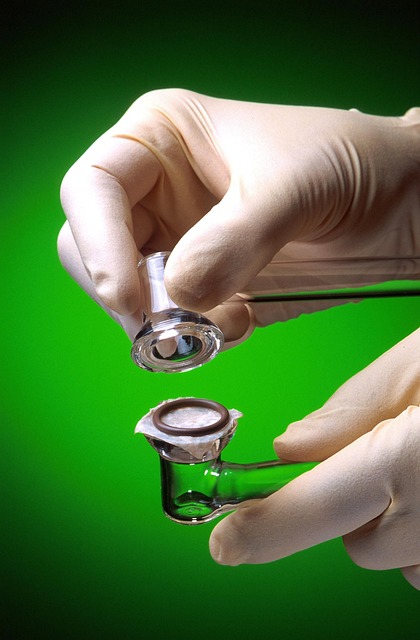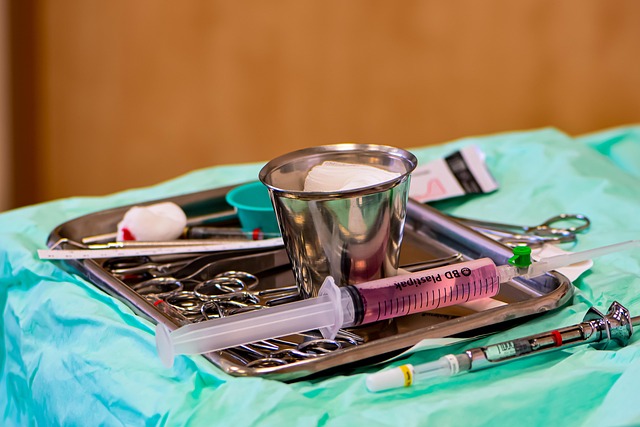OTC wart removal solutions in Essex offer convenient, cost-effective alternatives to outpatient procedures for warts. Creams, gels, and pads with salicylic, podophyllotoxin, or lactic acid exfoliate or inhibit cell growth. Safety and efficacy depend on quality and correct use; professional advice is recommended for persistent cases. Outpatient removal involves cleaning, applying solution, bandaging, and daily repetition. Post-treatment care includes keeping the area clean, avoiding irritants, monitoring for infection, and consistent application. User reviews can inform decisions, but consulting a healthcare provider is ideal for personalized recommendations.
Looking to buy over-the-counter (OTC) wart removal solutions? This comprehensive guide will walk you through every step of the process, from understanding different OTC treatments to evaluating safety and efficacy. Learn about common types, including salicylic acid and podophyllotoxin, and discover a simple, outpatient wart removal procedure you can do at home. We’ll also cover post-treatment care and monitoring results for successful wart elimination.
- Understanding Over-the-Counter Wart Removal Solutions
- Common Types of OTC Wart Treatments
- Evaluating Safety and Efficacy of Various Products
- Step-by-Step Guide for Outpatient Application
- Post-Treatment Care and Monitoring Results
Understanding Over-the-Counter Wart Removal Solutions

Over-the-counter (OTC) wart removal solutions are designed to treat warts in the comfort of your home, offering a convenient and potentially cost-effective alternative to more invasive outpatient wart removal procedures. These OTC options typically include creams, gels, or pads that contain active ingredients like salicylic acid, podophyllotoxin, or lactic acid. These ingredients work by chemically exfoliating the skin or stopping the growth of wart cells.
Understanding how these solutions function and choosing the right product for your needs is crucial. While outpatient wart removal procedures, such as those offered in Essex Southend-on-Sea, can be effective, they often come with higher costs per visit. By selecting an OTC option, you may save money while still achieving satisfactory results. Always follow the instructions provided to ensure safety and efficacy during use.
Common Types of OTC Wart Treatments

Over-the-counter (OTC) wart removal solutions are a popular choice for those seeking a convenient and non-invasive outpatient wart removal procedure. The market offers various options, each designed to target and eliminate warts effectively. One of the most common types is acid-based treatments, which include salicylic acid and glycolic acid. These topical creams or liquids work by dissolving the outer layer of the wart, gradually removing it over several applications. Salicylic acid is widely available and often recommended for treating common warts, while glycolic acid products are slightly more specialized and can be effective for tougher cases.
Another popular choice is cryotherapy, where a healthcare professional or even a self-application kit freezes the wart using liquid nitrogen. This method is known for its ability to remove warts quickly, often in one visit, as advertised by some services like wart removal Leeds or Sheffield. Cryotherapy can be effective for various types of warts, but it may not suit everyone due to potential side effects and discomfort. There are also immune-stimulating treatments that strengthen the body’s natural defense against warts, such as those containing compounds like podophyllotoxin or echinacea. These options are worth considering, especially if you’re looking for a fast track to warts gone in one visit, though results may vary.
Evaluating Safety and Efficacy of Various Products

When considering over-the-counter (OTC) wart removal solutions, it’s paramount to assess both safety and efficacy. Not all products are created equal; some may offer swift relief, while others might fall short or even cause irritation or adverse wart removal side effects and risks. Always read product labels and follow instructions carefully to ensure safe use.
Various OTC options include creams, patches, and liquid solutions, each with its own set of active ingredients targeting wart elimination. While many are designed for easy application in the comfort of your home, seeking professional advice can be wise, especially for persistent or sensitive cases. For instance, exploring private wart removal manchester or wart removal bradford clinics could provide access to specialized treatments if OTC options prove ineffective.
Step-by-Step Guide for Outpatient Application

Outpatient Application Step-by-Step Guide
For an outpatient wart removal procedure, start by thoroughly cleaning and drying the affected area. This ensures a proper application of the chosen solution. Next, apply the over-the-counter wart remover according to the product’s instructions. Typically, this involves smearing a small amount of the solution directly onto the wart using a cotton swab or applicator. Gently rub the solution into the skin surface to ensure full coverage. After application, cover the wart with a bandage or adhesive strip to protect it from friction and further exposure during daily activities. This is crucial for faster healing.
Repeat this process daily, following each application with a clean, dry area. You may experience some discomfort as the wart removes, but most over-the-counter solutions are designed to be used at home without professional intervention. For those seeking alternative options, private wart removal services like those available in Bristol or Preston (Lancashire) offer discreet and effective treatments for seniors or anyone needing a more personalized approach.
Post-Treatment Care and Monitoring Results

After undergoing an outpatient wart removal procedure, proper post-treatment care is essential to ensure optimal results and prevent reoccurrence. It’s recommended to keep the treated area clean and dry, avoiding activities that may irritate it. This includes refraining from using harsh soaps or soaking the area for prolonged periods. Most over-the-counter wart removal solutions require several applications, so consistency in following the treatment plan is crucial. Monitoring the treated site regularly for any signs of infection, such as redness, swelling, or discharge, is vital. If these symptoms persist or worsen, seeking medical advice from a Maidstone wart clinic or Bradford wart clinic is advisable.
Regular check-ups are often necessary to assess the effectiveness of the chosen treatment method. Some solutions may take several weeks or even months to completely eliminate warts, while others might require additional procedures if not successful on the initial attempt. Comparing different over-the-counter wart removers can be helpful in understanding their efficacy and user experiences, as seen in various reviews. However, individual responses to these treatments vary, so consulting with a healthcare professional remains the best way to determine the most suitable option for each person’s specific case.
When considering an over-the-counter (OTC) wart removal solution, it’s crucial to understand the various options, their safety profiles, and efficacy. After evaluating products based on active ingredients and user reviews, you can confidently choose a suitable OTC treatment. Following a simple, step-by-step outpatient application routine and monitoring your results post-treatment will help ensure successful wart removal. Remember, while these solutions are widely available, seeking medical advice for persistent or painful warts is always recommended.
